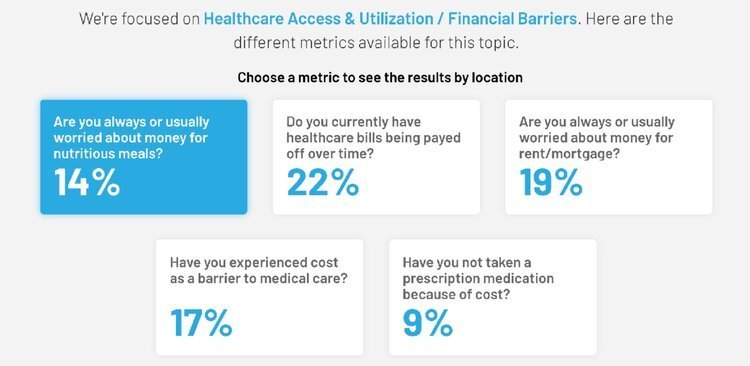11 Data Presentation Tips and Resources to Deliver More Client Value
Whether you are a consultant, marketer, researcher, or financial analyst…a big part of your job is presenting data. It takes a special combination of skills to articulate your insights and support them with effectively visualized data. You need to be part salesperson, part data analyst, and part author.
We’ve collected 11 of the most useful tips and resources to help you improve how you present data.
Visual Consistency
It can be awfully distracting for your audience to feel like your data presentation is a Frankenstein’s Monster of colors, fonts, and styles.
Many presentation tools are good at centrally managing the theme to ensure a consistent look. We recommend Beautiful.ai if you are slide-oriented or Juicebox if you are presenting more data and want interactivity.
2. Duarte’s Data Story Tools
Duarte Design is one of the true leaders in designing impactful presentations. Their team has increasingly focused on data as an important part of the message. Check out their collection of data presentation tools to improve your next slide presentation.
3. Simpler is better
One of the worst presentation challenges is having to explain how to interpret a chart. At that point, you are definitely off-message, and potentially losing your audience’s confidence.
We recommend sticking to chart types (bars, lines) that are familiar and easily interpreted. You can always break your story into smaller parts in order to cover complex content. Check out Chart Chooser for simple, beautifully-formatted Excel and PowerPoint charts.
4. Set the context before diving into details
Before you dive into your data presentation, explain the problem or question you are addressing; and a brief overview of the data that is underpinning your analysis. Without setting these parameters, your audience is bound to be lost and confused.
Here are three kinds of context you’ll want to consider.
5. Lea Pica’s Data Presentation Site
Lea is one of the leading thinkers and trainers on data presentations. She has musings on her blog and outstanding workshops such as “3 Keys Every Data Practitioner Needs to Confidently Present Insights and Inspire Action”
6. Interaction builds trust
If you can present data in a way that responds to your audience’s questions in real-time, you’ll build trust in the content you are sharing.
Show that you can be nimble with your data while guiding your audience with the right metrics and visualizations that will deliver insights.
If you’re concerned that interaction will be distracting, stick to a more traditional static slides approach.
7. Know your audience
Every data presentation needs to start by considering who you are looking to influence with your data. What are their priorities? What actions can they take?
For a deeper dive, check out our Data Personality Profile framework.
8. Refine your data-rich slides
Chris Tauber’s Data for Execs Guide is a wonderful source for improving your data-rich slides. He offers numerous examples of before-and-after slide improvements with explanations for the changes he makes.
9. Manage attention
Not all the data is equally important in order to make your point.
You want to highlight the key data points and deemphasize the rest. You can also use call-outs and arrows to make it clear what you want people to take away from your charts.
10. Go beyond charts
A data presentation doesn’t have to be all data all the time.
Find the key messages and express them succinctly in text. Look for examples that underscore those messages. And incorporate images and other visuals that create emotional connections.
11. Explore the “Extreme Presentation” method
Andrew Abela’s Extreme Presentation framework is thoughtful and comprehensive. He describes it as “a simple but effective design approach for creating presentations that are clear, convincing, visually captivating.”











